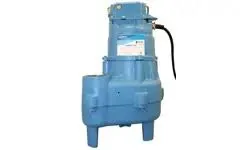Kyrgyz
- Afrikaans
- Albanian
- Amharic
- Arabic
- Armenian
- Azerbaijani
- Basque
- Belarusian
- Bengali
- Bosnian
- Bulgarian
- Catalan
- Cebuano
- Corsican
- Croatian
- Czech
- Danish
- Dutch
- English
- Esperanto
- Estonian
- Finnish
- French
- Frisian
- Galician
- Georgian
- German
- Greek
- Gujarati
- Haitian Creole
- hausa
- hawaiian
- Hebrew
- Hindi
- Miao
- Hungarian
- Icelandic
- igbo
- Indonesian
- irish
- Italian
- Japanese
- Javanese
- Kannada
- kazakh
- Khmer
- Rwandese
- Korean
- Kurdish
- Kyrgyz
- Lao
- Latin
- Latvian
- Lithuanian
- Luxembourgish
- Macedonian
- Malgashi
- Malay
- Malayalam
- Maltese
- Maori
- Marathi
- Mongolian
- Myanmar
- Nepali
- Norwegian
- Norwegian
- Occitan
- Pashto
- Persian
- Polish
- Portuguese
- Punjabi
- Romanian
- Russian
- Samoan
- Scottish Gaelic
- Serbian
- Sesotho
- Shona
- Sindhi
- Sinhala
- Slovak
- Slovenian
- Somali
- Spanish
- Sundanese
- Swahili
- Swedish
- Tagalog
- Tajik
- Tamil
- Tatar
- Telugu
- Thai
- Turkish
- Turkmen
- Ukrainian
- Urdu
- Uighur
- Uzbek
- Vietnamese
- Welsh
- Bantu
- Yiddish
- Yoruba
- Zulu
Telephone: +86 13120555503
Email: frank@cypump.com
Nov . 18, 2024 14:10 Back to list
submersible sewage grinder pump
Understanding Submersible Sewage Grinder Pumps
In modern wastewater management, the need for efficient and reliable systems is paramount, especially in residential and industrial applications. One of the critical components in these systems is the submersible sewage grinder pump. This article delves into what these pumps are, their operating mechanisms, advantages, and applications.
What is a Submersible Sewage Grinder Pump?
A submersible sewage grinder pump is a type of pump designed to be submerged in a sump or a sewage pit. Unlike traditional sewage pumps, which often handle raw sewage without any preprocessing, grinder pumps are equipped with powerful blades or grinders that break down solids and fibrous materials into finer particles. This capability allows the pump to efficiently transport sewage and wastewater through smaller pipes, making it an essential tool in various sewage management systems.
Operating Mechanism
The operation of a submersible sewage grinder pump is relatively straightforward. Once installed in a containment basin, the pump is activated when the wastewater level rises to a certain point. The grinder mechanism engages, shredding solid waste—including items like rags, hair, and food scraps—into smaller pieces. This preprocessing is crucial for preventing clogs in the subsequent plumbing lines.
The pump then uses a strong motor to lift the ground waste to the surface through a discharge pipe. The size of the ground particles allows the use of smaller diameter piping, which can significantly reduce installation costs and space. Furthermore, the submersible design keeps the motor and electrical components out of sight and protected from the elements, enhancing the longevity and reliability of the pump.
Advantages of Submersible Sewage Grinder Pumps
1. Efficient Waste Processing One of the primary advantages is the pump's ability to handle solid waste efficiently. By grinding down solid materials, these pumps reduce the likelihood of clogs and backups, which can be a significant issue in wastewater systems.
submersible sewage grinder pump

2. Space Saving Submersible pumps are compact and can fit into smaller spaces, making them ideal for locations where conventional systems may not be feasible. This is particularly beneficial in residential applications where space is often limited.
3. Reduced Noise Levels Since the pump is submerged, it tends to operate more quietly than above-ground pumps. This feature is particularly advantageous in residential areas where noise pollution can be a concern.
4. Lower Installation Costs The ability to use smaller diameter pipes can lead to substantial savings on labor and material costs during installation. Moreover, their compact nature means that less groundwork is needed.
5. Durability Many submersible sewage grinder pumps are made from robust materials designed to resist corrosive environments. As a result, they tend to have a longer lifespan compared to standard pumps.
Applications
Submersible sewage grinder pumps find applications in various settings
- Residential Systems Many homeowners use these pumps in basements or crawl spaces, particularly where gravity drains are not accessible. - Commercial Properties Restaurants and food establishments can benefit from grinder pumps that handle food waste effectively, preventing costly plumbing issues. - Industrial Use In factories and waste-processing plants, these pumps manage a wide range of materials, ensuring smooth operation in the wastewater treatment process.
Conclusion
Submersible sewage grinder pumps represent a practical and efficient solution for managing wastewater and sewage, especially in environments where traditional systems may fall short. Their ability to grind solids into smaller particles not only enhances the reliability of sewage systems but also provides significant cost savings in installation and maintenance. As urban areas continue to grow and the need for advanced wastewater solutions becomes increasingly vital, the role of submersible sewage grinder pumps is expected to expand, making them a cornerstone of modern waste management practices.
-
ISG Series Vertical Pipeline Pump - Chi Yuan Pumps Co., LTD.|High Efficiency, Low Noise, Durable
NewsAug.02,2025
-
ISG Series Vertical Pipeline Pump - Chi Yuan Pumps | High Efficiency, Low Noise
NewsAug.02,2025
-
ISG Series Vertical Pipeline Pump- Chi Yuan Pumps Co., LTD.|High Efficiency&Compact Design
NewsAug.02,2025
-
Heavy-Duty Mining Sludge Pumps - Wear-Resistant Slurry Handling
NewsAug.02,2025
-
Horizontal Split Case Pump with GPT-4 Turbo | High Efficiency
NewsAug.01,2025
-
ISG Series Pipeline Pump - Chi Yuan Pumps | High Efficiency, Durable Design
NewsAug.01,2025










